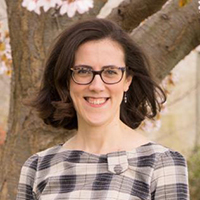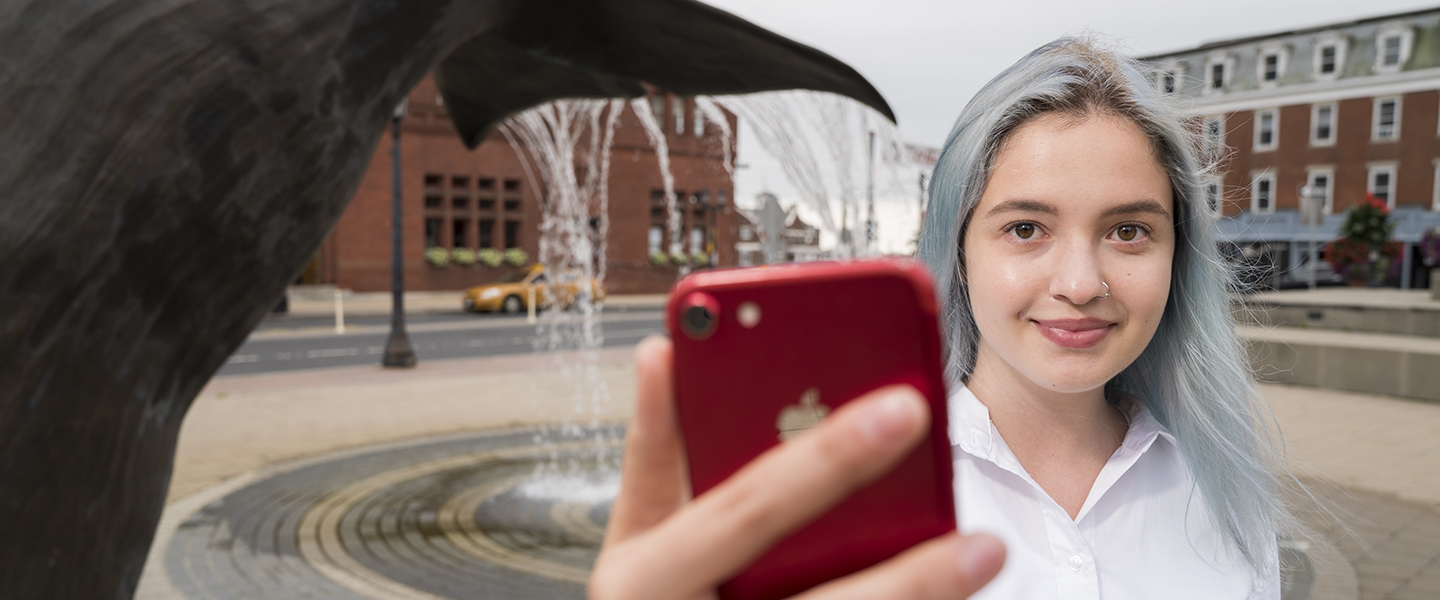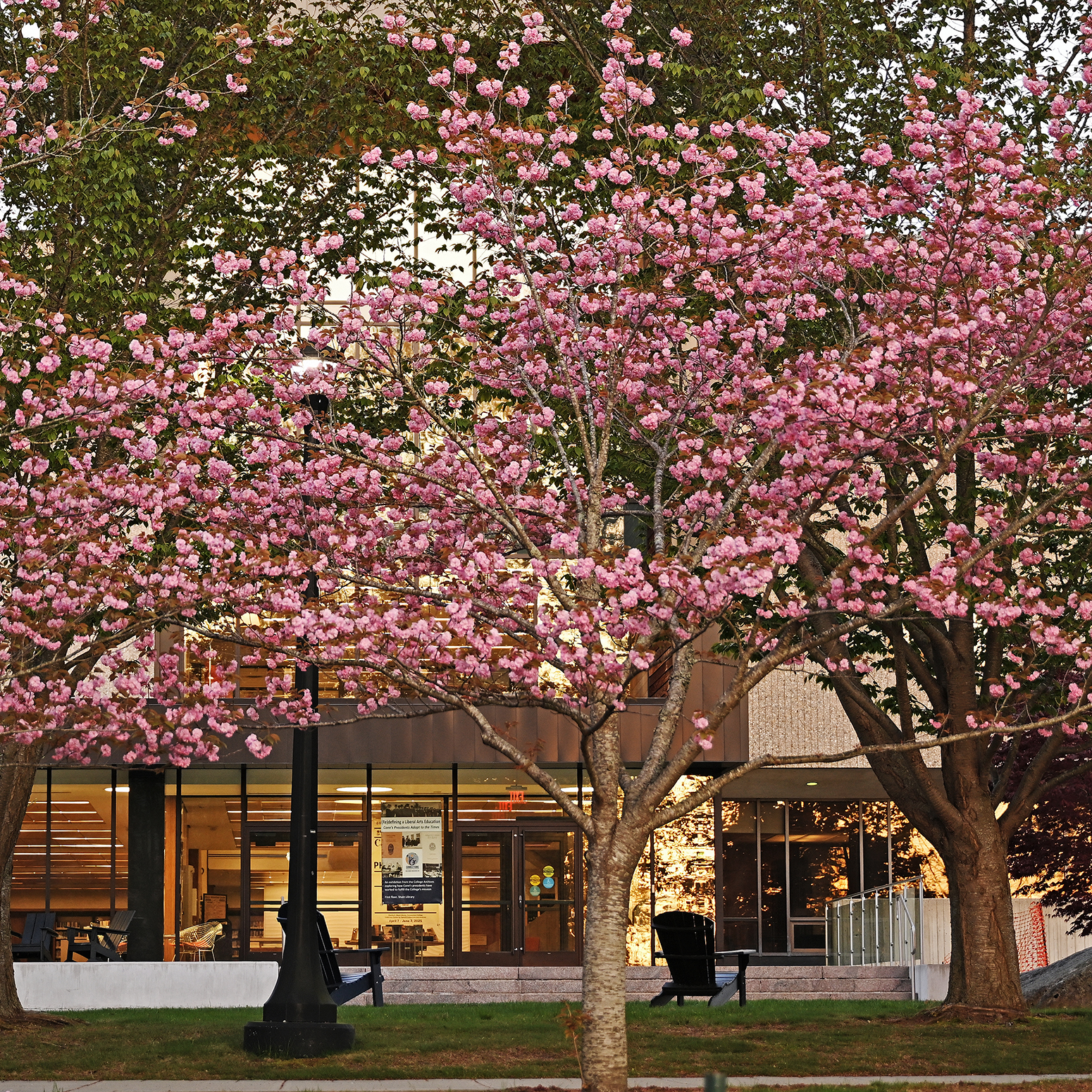
The Quest
One student's animating question led her down the Entrepreneurship Pathway to a smartphone app connecting Conn to New London.
In her first semester at Connecticut College, Lera Shynkarova ’20 took “Build Community, Create Change,” a First-Year Seminar course. She came away inspired by the course’s critical examination of civic engagement.
“I left that class wanting to work with people,” the economics major recalls. “I decided to introduce students to the New London community in a way that would increase our understanding of the culture of the local community, and at the same time introduce New Londoners to my fellow students.”
Shynkarova built upon the College’s tradition of global and local engagement to find inspiration: She would create a mobile application that led users on a “quest” through New London. The app would provide an interactive way to learn more about the history and development of the city by guiding students on a journey across their new hometown.
While the idea percolated during that first year, Shynkarova realized that she might be able to pursue the concept by incorporating it into an Integrative Pathway during her second year.
Coordinated by interdisciplinary groups of faculty members, each Pathway is organized around a central theme, from Public Health to Migration, Global Capitalism to Creativity. Students explore that theme inside the classroom and out, through study abroad, internships and civic engagement.
When Shynkarova found out about the Entrepreneurship, Social Innovation, Value and Change Pathway, “It was just like magic,” she says.
Shynkarova’s “animating question,” which guides the student’s journey through Connections, is: How can we introduce small and medium-sized businesses in New London to the campus community?
With her mobile app in development, the budding entrepreneur wanted to understand how to make her venture profitable, while still keeping true to her initial goal of civic engagement.
“I think that there should be a mutual benefit both for me as a producer of a good and for other people who would benefit from the good,” she explains. “How do people actually create something valuable and profitable out of their own ideas?”
Shynkarova, who grew up in Belarus, knew that she wanted to study economics when she arrived at Conn. However, she also wanted to experience the broad academic range that a liberal arts institution has to offer.
“Back home, it’s very different,” she says. “You have a really strict path you follow. I always knew that I wanted more flexibility.”
In order to incorporate other subjects and questions into her major studies, she has taken classes in fields such as art and sociology, as well as more standard economics courses like game theory.
“Part of me wanted to do something different with economics, rather than investment or just analyzing theories,” Shynkarova says.
When the Entrepreneurship Pathway came along, it seemed like the perfect fit for Shynkarova.
“Every class led me to this moment when I realized that this Pathway presented a way to combine everything I’d learned.”
Integrative Pathways are a key part of Conn’s mission to create global citizens and successful professionals, according to Professor of Computer Science Gary Parker, the Entrepreneurship Pathway Coordinator.
“Understanding what goes into entrepreneurial pursuits gives our students better awareness about how social innovation and businesses develop,” Parker says.
“We have a high percentage of creative and innovative students at Connecticut College,” he adds. For students like Shynkarova, “the Entrepreneurship Pathway enables them to learn both theory and application, so that they can bring their ideas to fruition.”
After enrolling in the Pathway during her sophomore year, Shynkarova and her classmates began to dissect the very notion of entrepreneurship.
“As an entrepreneur—a person who is leading the project—you should not be creating a product, getting it fully developed and then presenting it to people,” she says. Instead, you should be “testing all of your different assumptions and ideas, and then adjusting them in the process.”
This complicated her thinking about the app—in a good way.
Where she had initially considered a simple question-and-answer format—users would travel to a location in New London and then read a clue or a piece of historical information on their mobile device—this now seemed too simple.
So she set about building a range of interactive features that would vary the users’ quest experience—“not just staring at your phone and trying to find a clue or solve a riddle,” she explains. “People can teach you more than textbooks or mobile apps, so I really wanted to provide more interaction.”
Last summer, with the help of funding from the College’s Academic Resource Center, Shynkarova traveled to Ukraine and Russia to learn more about the kinds of features users prefer in a quest-style app.
“I realized that a lot of people love touching real paper and speaking with others,” she says. “The more features and interaction I can create, the more tactile the app will become, and this might help increase the interaction between users of the app and New Londoners.”
Though the project is not yet finalized, Shynkarova remains focused on the fact that the app must “promote this idea that there is much more in the community around you, and this can be beneficial to you, and you can be beneficial to it as well.”
Does she see future career possibilities growing out of the project?
“I wanted to explore as many things as I could during my first two years of college. Now, I feel like this is something that I would love to work on and do more of—creating interactions between the students and the communities in which they live,” she says.

